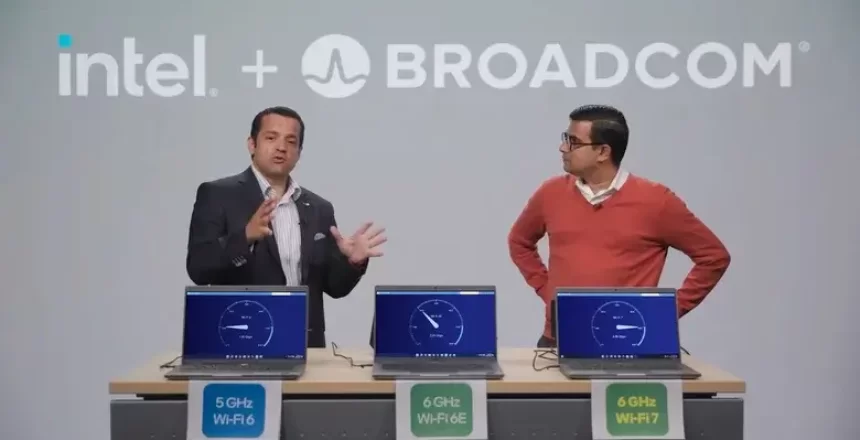A lot has changed since Wi-Fi first came on the market in 1997, where it had a maximum speed of 2Mbps but in the real world was considerably slower than that, but it enabled wireless communication including printers and even Smart TVs. The latest technology started to use the 6GHz band to improve performance but Wi-Fi 7 is set to make that so much faster and with less latency.
46Gbps with Wi-Fi 7
Wi-Fi 7 is set to improve the maximum speed of Wi-Fi 6E (currently limited to just under 10Gbps) to 46Gbps.
Wif-Fi 7 does this by providing something called Multi-Link operation. Currently, when you use Wi-Fi, you connect to the router using either 2.4GHz, 5GHz or 6GHz bands and communicate with the router that way. Wi-Fi 7 has a feature called Multi-Link Operation, so instead of using either 2.4GHz or 5GHz or 6GHz, your device uses all of them at once as one connection which greatly increases the speed and connectivity of the device.
The ability to use multiple connections is not new, but being able to use them at the same time is.
Quadrature Amplitude Modulation - QAM
Quadrature Amplitude Modulation is an encoding method used in Wi-Fi to get as much information into the radio frequency as possible. Wi-Fi 6 uses 1024QAM, which enabled it to send 1024 signals at once, but Wi-Fi 7 will use 4KQAM enabling 4096 signals at once, which nets a 20% data rate improvement over Wi-Fi 6.
Wider and more channels
Wi-Fi 7 makes use of wider channels and more of them in the 6GHz, which increases channel availability for more devices while increasing the throughput of data.
Intel and Broadcom video
Intel and Broadcom have demonstrated 5Gbps over Wi-Fi which is a 5 times speed increase in performance over Wi-Fi 6, but the standard hasn’t been finalised so more improvements are to come which means that 30-40Gbps real time speeds.

